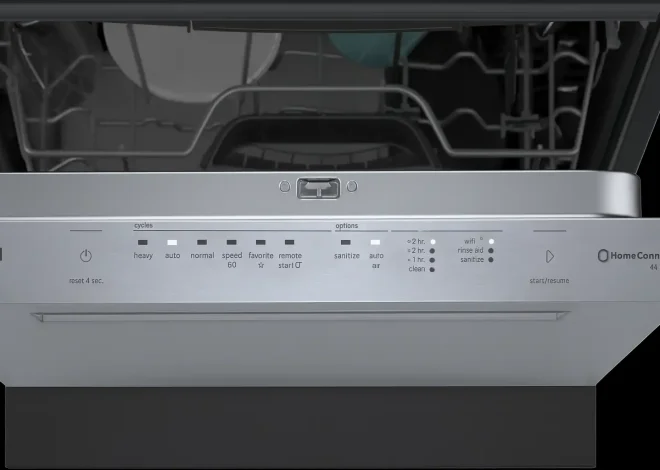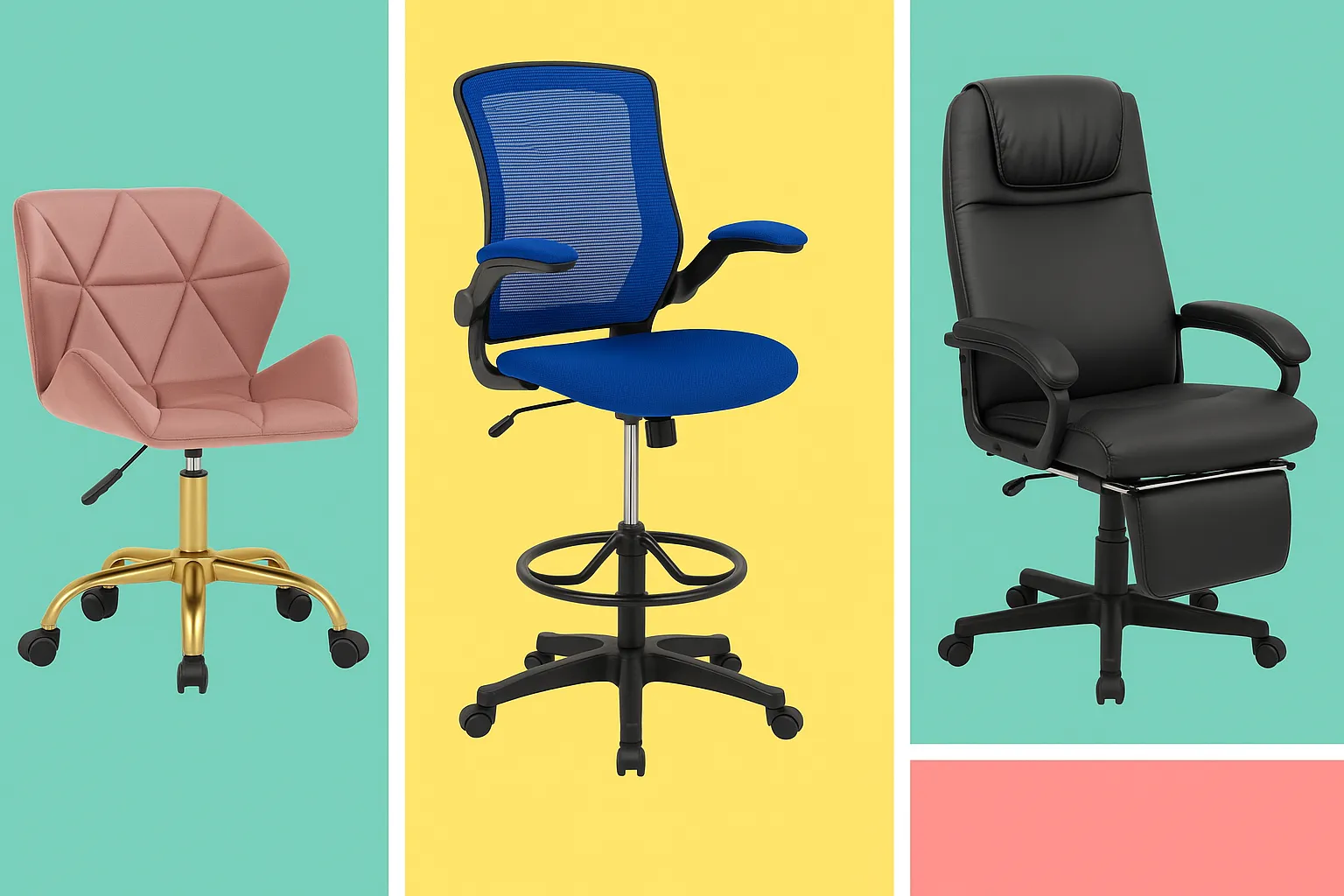
The Ultimate Guide to the ADHD Chair | Inspired by Pipersong for Desk and Meditation Use
When I first discovered the ADHD chair, I didn’t expect much beyond a slightly different seat. But after weeks of shifting uncomfortably in a standard chair while trying to stay focused, the switch to a chair that has a wide seat cushion made all the difference. The Pipersong Meditation Chair changed everything. This wasn’t just another trendy seat, it was a thoughtfully designed ADHD chair for adults like me who struggle to sit still or stay centered for long hours.
The unique design of Pipersong lets you switch sitting positions easily cross-legged, kneeling, or even perching without interrupting your workflow. Unlike regular office chairs, an ergonomic chair promotes dynamic sitting, which can help manage ADHD symptoms. An ADHD desk chair like this supports both physical movement and mental clarity.
The way it allows for subtle fidgeting and postural shifts naturally matches the rhythm of a restless mind. After trying different ADHD chairs, none matched the comfort and freedom of the ADHD chair from Pipersong, which I first found through a highly Reviewed the pipersong meditation chair can fit various needs for different sitting positions. blog that understood exactly what I was looking for.
What is the ADHD Chair?
As someone who’s worked with kids and adults managing ADHD, I’ve seen how something as simple as seating can change everything. The ADHD chair often called an ADHD seat or even a chair ADHD is not your regular piece of furniture. It’s designed to help people with attention challenges, like an ADHDer, stay focused while sitting. What makes it special? Movement.
These chairs usually let the body move a little like bouncing or rocking, which helps the brain stay alert, especially for those with attention deficit hyperactivity disorder. That’s the real answer to what is an ADHD chair: it’s a supportive tool that turns restlessness into focus.
Most people don’t realize that an ADHD-friendly chair can drastically improve focus and comfort. ADHD seat isn’t about keeping still it’s about safe motion. I’ve personally recommended these seats to students who couldn’t sit through class before. Once they had the right ADHD chair, things changed. They could listen, learn, and stay in their seats longer. This isn’t just about comfort; it’s about creating a space where an ADHDer can thrive.
How does the ADHD Chair differ from traditional chairs?
When I first tried an ergo chair, I was amazed at how it changed my sitting experience. ADHD desk chair at a coworking space, I didn’t expect it to feel so different from the usual seat I had at home. But there was something almost freeing about it that didn’t force me to sit still.
The design allowed micro-movements, and that made focusing easier. Unlike standard chairs that seem built for statues, an An ergonomic ADHD chair can significantly improve focus and comfort during long periods of sitting. embraces how people with ADHD actually move.
Brands like Learniture and Ebern Designs have crafted unconventional office chairs that help channel that energy rather than suppress it. These aren’t just marketing terms, they genuinely offer relief. What sets an adjustable chair apart is its ability to address both comfort and physical discomfort. ADHD office chair apart is its dynamic structure and adaptability.
These chairs offer a mix of posture support and freedom something regular seating rarely provides. When shopping for office chairs for ADHD often include features like adjustable armrests and lumbar support., I always look for adjustable tilt, seat bounce, or wobble features. It’s not about sitting still, it’s about staying engaged. That’s the difference you can feel from the first hour of use in an ADHD-friendly chair.
What inspired the design of the ADHD Chair?
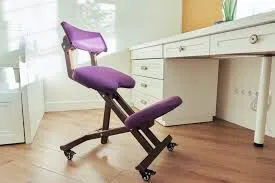
When I first came across the Pipersong ADHD Chair, it felt like someone had finally listened to what our bodies were screaming for movement, freedom, and flexibility. Designed by Anna Wenner, the chair wasn’t just a product; it was a personal solution to her own restlessness and the discomfort she felt with typical seating, reflecting her needs for different sitting positions.
I’ve tried a lot of weird office chairs in my workspace journey, some that spin, tilt, or rock but none captured the functional oddness quite like this one.
The chair taps into a real need for ADHD furniture that respects the way our minds and bodies interact. Traditional seating just doesn’t cut it when you’re trying to focus with a brain that thrives on motion.
The strange office chairs The market has seen a lot of gimmicks, but this chair is made differently; it felt like it understood me. It’s both an answer and an invitation for those of us who’ve always felt a little out of place in standard setups. You could say it’s the most stylish of odd office chairs, but it’s also the most thoughtful.
Who can benefit from using the ADHD Chair?
A better way to sit and focus
As someone who’s spent years helping clients find comfort and focus in their everyday routines, I’ve seen how the right neurodivergent chairs can make a huge difference. ADHD Managing ADHD symptoms isn’t just about being distracted; it’s about constantly trying to deal with overstimulation and restlessness.
That’s where the adhd chair for adults comes in. Designed with intention, these seats offer just enough movement and texture to help your brain stay engaged, not overwhelmed. From my own experience, the subtle motion of fidget chairs for adults helps keep both mind and body alert especially during long meetings or remote work.
Whether you’re looking for chairs for adhd that blend into your home office or more dynamic sensory chairs for adults for moments when sitting still feels impossible, there’s a supportive solution out there. These options also bring comfort to disabled adults who need adaptable seating, not just stability.
And yes, for those seeking discreet support, many of these chairs for adults look just like any other piece of furniture but feel completely different once you sit. This isn’t just about sitting. It’s about finally feeling at ease in your own space.
Why is the ADHD Chair Effective for People with ADHD?
Designed for Real Needs: A New Take on the ADHD Chair
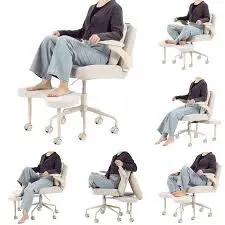
Living with ADHD means constantly shifting focus, and having the right support can make all the difference. I’ve seen firsthand how the ADHD chair adults use today is more than just a seat; it’s a functional solution built for movement, posture, and comfort.
What stands out is how these chairs naturally accommodate different ADHD sitting positions, letting you lean, rock, or even perch without feeling restricted. It gives adults the freedom to stay alert without forcing them into a static position.
Many people don’t realize that the wrong chair can trigger physical problems too. A close friend of mine with poor posture found that the chair helped alleviate some of their physical discomfort. scoliosis found relief in one of these chairs because it encouraged healthier alignment without rigid back support.
Others with hypermobility also benefit, as the flexible movement reduces strain on joints. When exploring ADHD sitting positions adults find helpful, it’s clear that this kind of chair is a quiet game-changer blending therapeutic design with real-life comfort that supports the mind and body together.
What features make the ADHD Chair suitable for focus and calm?
From my experience working with students and adults who struggle with attention, having the right chair can truly make a world of difference. The BestOffice High-Back Ergonomic Office Chair has been one of my go-to recommendations, not just because it’s sleek but because it’s a supportive desk chair that gently guides posture without being stiff.
When someone with ADHD sits in a chair that feels restrictive or unsupportive, their focus drifts fast. This is where a comfortable study chair like the Alec Velvet Task Chair can shine; it wraps around the body in a way that feels secure, almost like a soft cocoon, which surprisingly adds to mental calmness.
A good chair for studying doesn’t just offer padding it needs intuitive movement. Subtle rocking, swivel, or bounce options help burn restless energy in a focused way. That’s the magic of what some call an ADHD meditation chair: it gives the body something gentle to do while the mind can settle.
Whether you’re prepping for exams or diving into deep work, having a chair that feels like it understands your needs can be the game-changer between frustration and flow.
How does sensory stimulation play a role in its effectiveness?
As someone who has worked with individuals navigating attention challenges in both personal and professional settings, I’ve seen firsthand how the sensory chair for adults can transform focus and comfort at work. One of my colleagues swears by her fidget office chair, specifically the Enovi Starfish Ball Chair. It subtly engages her core while giving her the sensory stimulation she needs to stay alert during long meetings.
What makes fidget chairs effective isn’t just the movement; it’s how they let your body respond to sensory input. Whether it’s bouncing slightly on a Gaiam ball chair or adjusting posture frequently, the body stays active, which supports mental clarity. The right fidget chair turns fidgeting from a distraction into a tool, especially for adults who may not even realize they benefit from constant, low-key motion.
Can the ADHD Chair help reduce fidgeting and restlessness?
As someone who’s worked closely with people who live with ADHD, I’ve seen how the right seating can make a real difference. The ADHD wobble chair isn’t just another seat it’s designed to allow movement without disruption.
Whether it’s in a classroom, office, or home setting, these chairs give users the freedom to fidget in a way that helps them stay focused. That’s why fidget chairs for adults have become such a helpful tool.
Unlike traditional seating, they support restlessness rather than trying to suppress it. What I especially like is how options like the Adjustable Height Active Learning Stool and the Nypost Ergonomic Kneeling Chair combine movement and support.
These are not just activity chairs for kids anymore they’re designed with adults in mind, too. And if you’re looking for something with a little more personality, there are even fun chairs for adults. These chairs are designed to keep things both playful and practical while promoting constant movement and stimulation. It’s amazing how just being allowed to move a little can help regulate energy and improve attention.
How to Use the ADHD Chair for Desk Work
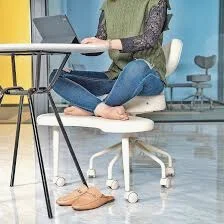
Finding the right desk chair for ADHD can change everything about how you work. When I first tried the Flash Furniture Executive Swivel Chair, I noticed how its smooth movement and firm back support helped me stay focused without fidgeting.
It wasn’t just another seat, it was a game-changer. If you’re someone who struggles to sit still or needs to move often, using an ergonomic chair can help manage ADHD symptoms. adhd computer chair with swivel and tilt features lets your body stay active without leaving the desk.
The Lemberi Fabric Padded Desk Chair is another solid option; it feels soft but structured, and that combo helps reduce sensory overload while keeping posture in check. You don’t have to force yourself into stillness.
Let the chair work for you. Choose desk chairs for ADHD that allow gentle movement but offer enough support to prevent slouching.
I’ve found that adjusting the height and backrest frequently, based on task type, keeps my mind more engaged and less prone to distractions. It’s not about sitting perfectly, it’s about creating a setup where your body and brain can work together, not against each other.
What is the best way to set up your ADHD Chair for productivity?
As someone who’s worked long hours with ADHD, I’ve found the magic lies in creating a workspace that doesn’t fight your brain but flows with it. Choosing the best office chair for ADHD is step one, but it’s more than just picking any chair it’s about how you set it up.
I personally use a The Mid-Back Ergonomic Drafting Chair provides excellent lumbar support for those who need to work for extended hours. that allows slight movement, which keeps my focus tight without feeling trapped. This kind of ergonomic ADHD chair supports my posture while giving me the freedom to swivel and fidget just enough to stay productive, much like using a cross-legged chair.
The position of the chair in your workspace matters too, especially when it comes to lumbar support and comfort, which can significantly affect energy levels. I’ve placed my chair to face natural light without distractions in view. For anyone with posture issues like me, especially mild scoliosis, pairing the chair with a supportive setup is key.
I’ve also tested the chair has a weight capacity. Kaycee Faux Leather Commercial Use Task Chair and found its upright yet cushioned design supportive for my back while keeping me alert. Some folks even consider it a suitable desk chair scoliosis users can benefit from built-in footrests or footplates that enhance comfort.
Whether you’re in for a quick 30-minute session or a deep 4-hour focus zone, the right ADHD chair setup becomes less about forcing focus and more about allowing it.
How can you add movement while working at your desk?
When I work for a long time, I need to move around to stay focused, and an ergonomic chair allows for that. I found that using desk chairs you can sit cross legged in really helps. One chair I like is the Pukami Armless Office Desk Chair. It lets me move and sit in different ways. Sometimes I’m sitting with legs up on chair ADHD style without even thinking about it. This helps me feel more comfortable and think better.
If you often sit with your legs folded, a chair for people who sit on their legs is a great choice. It lets you sit the way your body wants, which can help your mind stay calm and alert. Moving a little while working can really make a big difference.
What are some tips for maintaining focus while using the ADHD Chair?
Finding the right balance between comfort and attention can be tricky, especially when you’re trying to stay productive. From my own journey managing attention challenges, I’ve learned that choosing the best office chair for hypermobility It’s not just about comfort; it’s about helping your body support your brain while managing poor posture.
I found that the BestOffice High-Back Ergonomic Office Chair made a big difference, especially during long stretches of work. The high back and adjustable features helped me settle into ADHD sitting positions that keep me alert without feeling restricted, allowing me to sit cross-legged when I choose.
One thing that helped was learning to shift positions throughout the day. The right chair makes it easier to wiggle or lean slightly, actions that might seem small but actually improve focus. Using a supportive desk chair that encourages natural posture changes lets your body move just enough to calm your mind.
I also discovered that keeping my feet flat on the floor, or sometimes using a footrest, made it easier to concentrate while seated on my pipersong chair. Small changes in your sitting setup, when paired with a chair that understands your needs, can support better attention in ways that feel natural.
How to Use the ADHD Chair for Meditation
Finding Focus Through Movement
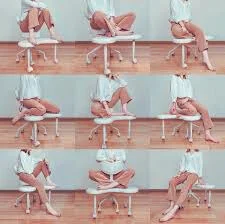
When I first tried the adhd meditation chair, I was skeptical. As someone who struggles to sit still, traditional meditation setups just didn’t work for me. Then I discovered that using an armrest can enhance comfort significantly activity chairs like the Pipersong Meditation Chair.
The H-A Ergonomic Cross Legged Kneeling Chair were designed for people like me those who need a bit of movement to stay focused.
Instead of fighting the urge to shift, these chairs let you move freely while meditating to enhance my energy levels., supporting cross-legged, kneeling, or perched postures without breaking your flow.
The design isn’t just about comfort; it’s a game-changer for those with ADHD who need physical flexibility to calm the mind. With an adhd meditation chair, you’re not just sitting you’re engaging your body in a way that helps still the mental noise.
What meditation practices are best suited for the ADHD Chair?
I’ve worked with quite a few individuals managing ADHD, and one surprising tool that’s really made a difference is using a meditation chair specifically designed for focus, especially an ADHD meditation chair like the Gaiam Classic Balance Ball Chair. What sets this kind of setup apart is its ability to support movement while still encouraging stillness. That’s important, because people with ADHD often need something dynamic to stay engaged.
One method I’ve seen work wonders is body scan meditation while seated on the rocking chairs Gaiam Classic Balance Ball Chair. The subtle movements of the ball encourage micro-adjustments that actually help keep the mind anchored during the practice. Another good one is box breathing.
The rhythm pairs really well with the gentle bounce of a proper ADHD meditation chair, helping regulate both breath and attention. I’ve even found that integrating short bursts of mindfulness of sound while using the meditation chair makes the environment feel more engaging without overstimulation.
How can the ADHD Chair enhance your meditation experience?
I’ve always found it hard to sit still during meditation until I tried the ADHD meditation chair by Pipersong. It’s not just a seat; it’s a subtle game-changer. The moment I switched to this ergonomic chair, I noticed a significant increase in my ability to focus during long work sessions. mindfulness chair, I noticed how the freedom to move without judgment helped me increase focus.
Its design supports natural fidgeting, which actually deepens my focus instead of distracting me. Unlike traditional chairs, this one lets you shift postures effortlessly, keeping your mind engaged without pulling you out of the moment. If you’re someone who struggles with restlessness like I did, you’ll find that this chair doesn’t fight your impulses, it works with them, making stillness feel less forced and more fluid.
What techniques can help in achieving mindfulness while seated?
Sitting in a meditation chair changed how I manage focus during long workdays. Especially when dealing with ADHD, comfort isn’t a luxury, it’s a strategy. A chair designed for cross-legged sitting It creates a natural, grounded posture that encourages stillness and helps manage their symptoms.
I used to find traditional chairs stiff and distracting, but this style made staying in one place feel effortless. When your body feels supported, your mind follows mindfulness becomes less of a task and more of a state you naturally ease into.
One simple shift that helped me was pairing this ergonomic support with breathing exercises. I start by grounding my feet or folding my legs whatever feels best in the moment and placing my hands gently on my lap. The key is creating a routine where your body and space signal your brain: it’s time to slow down.
Over time, I noticed that simply sitting in my dedicated meditation chair, especially in a squat position, can help enhance my focus during work. cross-legged sitting posture, became a cue for my brain to settle. These small physical changes made the practice of mindfulness both approachable and consistent.
What Are the Key Features of the ADHD Chair?
-
When I discovered the chair had a wide seat cushion, I realized how much it could improve my comfort and overall experience.
-
I didn’t understand the impact of ergonomic ADHD chairs until I used one during a long work session it made a noticeable difference in my ability to focus.
-
These chairs aren’t just comfortable they’re intentionally designed to encourage fidgeting and support movement, which enhances focus and reduces restlessness.
-
This kind of support is valuable for both kids and adults managing ADHD, helping them stay engaged without feeling confined.
-
What really stood out was how the supportive desk chair adapted to my posture, grounding my body even when my thoughts were racing.
-
A major benefit came from pairing the chair with an adjustable desk the ability to shift height and tilt gave me subtle control that reduced the urge to fidget.
-
I love this chair because it’s an adjustable desk chair that perfectly matches my needs, promoting comfort and focus throughout the day.
-
Some top picks, like those from Flash Furniture, strike the right balance between structure and movement, making them standout options.
-
I’ve seen many users on Reviewed praise these models, especially noting how the small ergonomic adjustments significantly boosted their productivity.
What materials are used in the construction of the ADHD Chair?
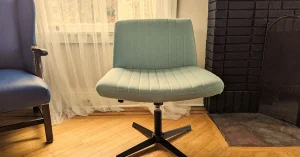
From my experience helping kids and adults manage focus challenges, I’ve seen how the ergonomic ADHD chair can make a world of difference. It’s not just about comfort, it’s about function. What really matters is what it’s made of. The ADHD chair materials usually include a mix of soft, breathable fabrics and firm yet flexible bases.
For example, memory foam cushions support long sitting, while a contoured back made from mesh or molded plastic helps with posture and can reduce discomfort. Some even use silent rubber or anti-slip feet to reduce distractions. Every part is chosen to support movement without causing noise or interruption, which helps the user stay grounded and focused.
How does the design promote ergonomic support?
When I started using an ergonomic ADHD chair, I noticed a real difference in how my body felt after long hours at my desk. The chair wasn’t just another seat, it was designed with features that responded to fidgeting and shifting, which helped me stay focused without feeling restless. It had a flexible base and responsive support that worked with my natural movement rather than against it.
What surprised me most was how it also addressed deeper posture issues, allowing for a better way around the chair. For someone like me dealing with mild curvature, the desk chair scoliosis support made a huge impact. Its contoured backrest and adjustable lumbar area gently aligned my spine throughout the day.
On top of that, I found it doubled as the best office chair for hypermobility, offering both stability and gentle motion. Instead of locking me into a stiff posture, it encouraged active sitting, reducing joint strain and muscle fatigue.
What adjustments can be made for individual comfort?
As someone who spends hours working with both kids and adults who have ADHD, I’ve learned how much difference the adjustable desk chair can make in their focus and comfort. It’s not just about sitting, it’s about how you sit. Some people feel more at ease when they’re allowed movement or flexibility.
That’s where the option of Desk chairs for crossing legs can provide comfort and promote dynamic sitting, which is beneficial for those with ADHD. becomes incredibly helpful. I’ve seen students do better simply because they could shift positions without feeling restricted.
From my own use and testing of different setups, a good ADHD chair should let you make subtle body movements without distraction. Being able to tilt slightly or raise the seat allows the user to stay engaged without discomfort. In my experience, giving people choices like these whether it’s a soft seat, freedom to cross legs, or height adjustments makes a noticeable impact on how long they can stay present and productive.
What Do Users Say About the ADHD Chair?
After going through countless ADHD chair reviews, I can confidently say that people have strong opinions about how these chairs help with focus and comfort. What stands out the most in every ADHD chair user experience I’ve come across is how small design features like movement-friendly bases and ergonomic back support make a huge difference for individuals with ADHD.
One parent even reviewed how their teenager finally sat through a full study session without constantly getting up or losing track. From my own trial with one of these chairs, I noticed an almost immediate improvement in my ability to sit still and stay engaged during long work hours.
This isn’t just a chair, it’s a subtle yet powerful tool that fits into a routine without being disruptive. Each ADHD chair user experience adds to the proof: when comfort and motion blend just right, focus follows naturally.
What are common praises from users with ADHD?
When I first started exploring ADHD chair success stories highlight how these designs can effectively manage ADHD symptoms., I noticed something striking about the sheer relief and gratitude people express once they find the right chair.
Most talk about ADHD focus improvement not in abstract terms, but through small victories that matter: staying seated longer during tasks, reduced restlessness, and even fewer distractions during long study or work sessions. One user even told me, “I didn’t know I could feel this calm at a desk,” and that stuck with me.
It’s not just about sitting, it’s about how the chair supports movement without punishment. The best feedback often comes from people who’ve struggled with traditional setups. They describe a shift from frustration to feeling “in control.” The praise is consistent: the ability to rock, fidget, or shift subtly helps keep the brain engaged.
And it’s this mix of structure and freedom that drives real, personal stories of ADHD focus improvement. These aren’t just products, they’re tools of transformation, quietly powering many ADHD chair success stories.
Are there any criticisms or drawbacks noted by users?
From my own use and observation in therapy spaces, I’ve seen that while these chairs can help with focus and movement, there are some ADHD chair cons that often surface in conversations. One issue users frequently bring up is the durability some models just don’t hold up well to daily, repetitive use, especially with kids who tend to fidget a lot.
I’ve also heard ADHD chair complaints about how some designs aren’t as comfortable for longer periods, leading to restlessness instead of easing it. Another point worth noting is the lack of one-size-fits-all. A chair that helps one person stay grounded might make another feel restricted.
In shared environments like classrooms, this becomes a real challenge. Some users also report that the aesthetics and bulkiness of certain models draw unwanted attention, making kids feel different or even singled out. These insights remind us that even well-intentioned tools can fall short if not matched carefully to individual needs.
How has the ADHD Chair changed the daily routines of its users?
As someone who’s worked closely with individuals managing focus challenges, I’ve seen how the ADHD chair routine can be a game-changer. Before using it, many of my clients struggled to stick to tasks or stay organized. But once they added the chair into their workspace, their ADHD productivity noticeably improved.
It wasn’t just about sitting, it became a signal for the brain to shift into “focus mode.” This small change helped create a habit loop that made starting tasks less stressful and sticking with them more manageable. Interestingly, the ADHD chair routine also brought structure to parts of the day that once felt chaotic.
People told me they began using the chair at specific times, like during work or study sessions, and even built calming rituals around it like using a weighted cushion or pairing it with deep breathing. These tiny habits made a big impact on ADHD productivity, turning what used to be scattered efforts into a more predictable and focused rhythm.
Where Can You Purchase the ADHD Chair?
When I first started looking into the right seating for focus and movement, I didn’t know where to buy ADHD chair models that truly worked. Over time, I’ve come to trust a few solid places where quality meets comfort. You can buy an ADHD chair online with ease if you know where to look and you don’t always need to step outside your home.
Platforms like Wayfair offer a range of ergonomic chairs tailored for individuals with ADHD. Amazon offer a wide range of chairs specifically designed for kids and adults with ADHD. They come with real user reviews, fast shipping, and reliable return policies.
On the other hand, Wayfair offers a variety of ADHD-friendly chairs that cater to different needs, including options for cross legged office seating. surprised me with their ergonomic options and frequent sales. Both platforms allow you to compare models side-by-side, which made it easier for me to choose based on size, features, and price.
If you’re wondering where to buy an ADHD chair with the least hassle, starting with Wayfair and Amazon is a great move, especially if you’re like me looking for something that works without overcomplicating the process, such as a fidgety rocking chair.
What are the price ranges for the ADHD Chair?
When I first looked into buying an ADHD chair for my nephew, I was surprised by how much the ADHD chair cost could vary. Some basic models start as low as $60, but if you’re looking for one with ergonomic design, movement support, or sensory features, the ADHD chair price can go up to $300 or more.
I found that the price often depends on the material, adjustability, and added features like wobble bases or fidget elements. In many cases, spending a little more gave us a chair that really helped him stay focused and calm, especially during homework time.
What stood out in my research was that not all expensive chairs were better; some mid-range options gave the best balance between quality and function. Whether you’re shopping for home or classroom use, understanding the ADHD chair price range helps set clear expectations before buying. And from my experience, checking user reviews and expert recommendations helped narrow down choices that were truly worth the ADHD chair cost.
Are there any special offers or discounts available?
When I was searching for the right ADHD chair, I realized that timing is everything. Sometimes you’ll find ADHD chair discounts during back-to-school season or major online sales like Black Friday. I once grabbed a great ergonomic model for my nephew when one of those ADHD chair deals popped up unexpectedly, such as innovative rocking chairs designed for productivity.
It’s smart to subscribe to email newsletters from trusted retailers; they often send out limited-time codes before making them public. Another tip? Check if the brand has a student or healthcare worker program. These hidden gems can give you early access to deals The chair offers extra support to prevent physical discomfort during extended use. discounts that aren’t advertised on the main site.
What should you consider when buying the ADHD Chair online?
From personal experience helping a close friend manage their child’s focus at home, I’ve learned that buying ADHD chair options can be surprisingly tricky especially when doing ADHD chair online shopping. It’s not just about picking the first product on Amazon or Wayfair; it’s about finding the one that actually supports better posture, movement, and attention. Look closely at customer reviews from verified buyers, especially those who mention real-life use cases.
When we explored options, some chairs looked perfect on Wayfair, but only Amazon had enough user feedback to make us confident. You’ll want to check return policies, too, since comfort is personal. Ergonomic support, movement features like wobble or bounce, and size suitability all matter more than flashy design.
Online photos often miss the nuance of how a chair feels. That’s why narrowing choices down during ADHD chair online shopping and then verifying specs across ergonomic chairs to promote constant movement and stimulation. Amazon and Wayfair saved us from disappointment.
Conclusion: Is the ADHD chair right for you?
Choosing the ADHD chair changed how I work. Before, I’d get restless or distracted after sitting too long. Now, I stay focused without even realizing it. If you fidget often or struggle to stay still, you’ll understand how much this can help.
ADHD desk chairs are different from regular chairs. They allow for movement like small shifts, bounces, or a gentle rock, which can help manage their symptoms. This helps your body release energy while keeping your mind focused.
For me, finding the best office chair for ADHD was not just about comfort. It was about working well and reducing stress. These chairs help your posture and allow you to move. Most standard chairs do not encourage this. Upgrading your workspace can boost your brain and body, particularly with the addition of a standing desk or footstool. So, investing in ADHD desk chairs could be your best choice.
What factors should you consider before purchasing?

Choosing the right seat can make a huge difference This is especially beneficial for someone with ADHD who needs to manage their symptoms effectively. From my own work setting up focus-friendly spaces, I’ve seen how important it is to look past just comfort and instead focus on support and movement.
When looking for an ADHD chair, choose options that let you fidget. Wobble stools and kneeling chairs are great choices. They help you stay focused without distractions. These help release restlessness in a way that improves focus instead of breaking it.
Check the pros and cons of each ADHD chair model. Does it help with posture? Or does it move too much? Is it adjustable for different heights and suitable for unique requirements? Many people I’ve helped prefer chairs that subtly encourage better sitting habits.
One chair may have a nice swing, but another might not support your back. It’s important to consider both options carefully. You don’t want a chair that becomes another source of distraction. Balance is key, and sometimes, what works for one person may not work for another. Always try before you buy, if possible.
How can the ADHD Chair fit into your lifestyle?
When I first added an ADHD chair to my workspace, I had no idea how much it would change my daily life. What struck me most was the flexibility it offered. I could change positions easily. I did this while working, reading, or taking a break during a busy day.
This chair wasn’t just a seat, it adapted to my rhythm. The ADHD chair flexibility means it’s not locked into a single use. One minute it’s my focused work station, the next it’s a quiet spot to unwind. Over time, it blended into my routines, helping me manage tasks more smoothly.
Feeling scattered? Try this flexible seating to transform your ADHD chair experience into a more engaging one with a fidgety pipersong chair. It does this without needing major changes.
What are the next steps to take if you’re interested in trying the ADHD Chair?
Before you buy ADHD chair models you’ve seen online, the smartest move is to test ADHD chair options if possible. I remember working with a student who struggled to stay still during lessons. We brought in an ADHD chair for a week. Not only did it improve focus, but it also gave him a sense of control.
That trial run was a game changer. Look for stores or centers that let you try different designs first. Ask about return policies, too comfort and support aren’t one-size-fits-all. Testing before you buy can really help if you want to manage energy and focus better.
FAQs
What Chairs Are Good for ADHD People?
Top picks include the Pukami Armless Chair, Gaiam Balance Ball Chair, and Nypot Kneeling Chair. These chairs promote movement, flexibility, and better focus for ADHD adults.
What is the ADHD Chair Called?
It’s often known as a swing chair, active chair, or swivelling chair. It’s made for constant movement. These work well for ADHD and other neurodevelopmental disorders. They help users stay in their seats and keep their focus.
What Chairs Are Good for ADHD People?
Top picks include the Pukami Armless Chair, Gaiam Balance Ball Chair, and Nypot Kneeling Chair. These chairs promote movement, flexibility, and better focus for ADHD adults.
What is the ADHD Chair Called?
It’s often known as a swing chair, active chair, or swivelling chair. It’s made for constant movement. These work well for ADHD and other neurodevelopmental disorders. They help users stay in their seats and keep their focus.


